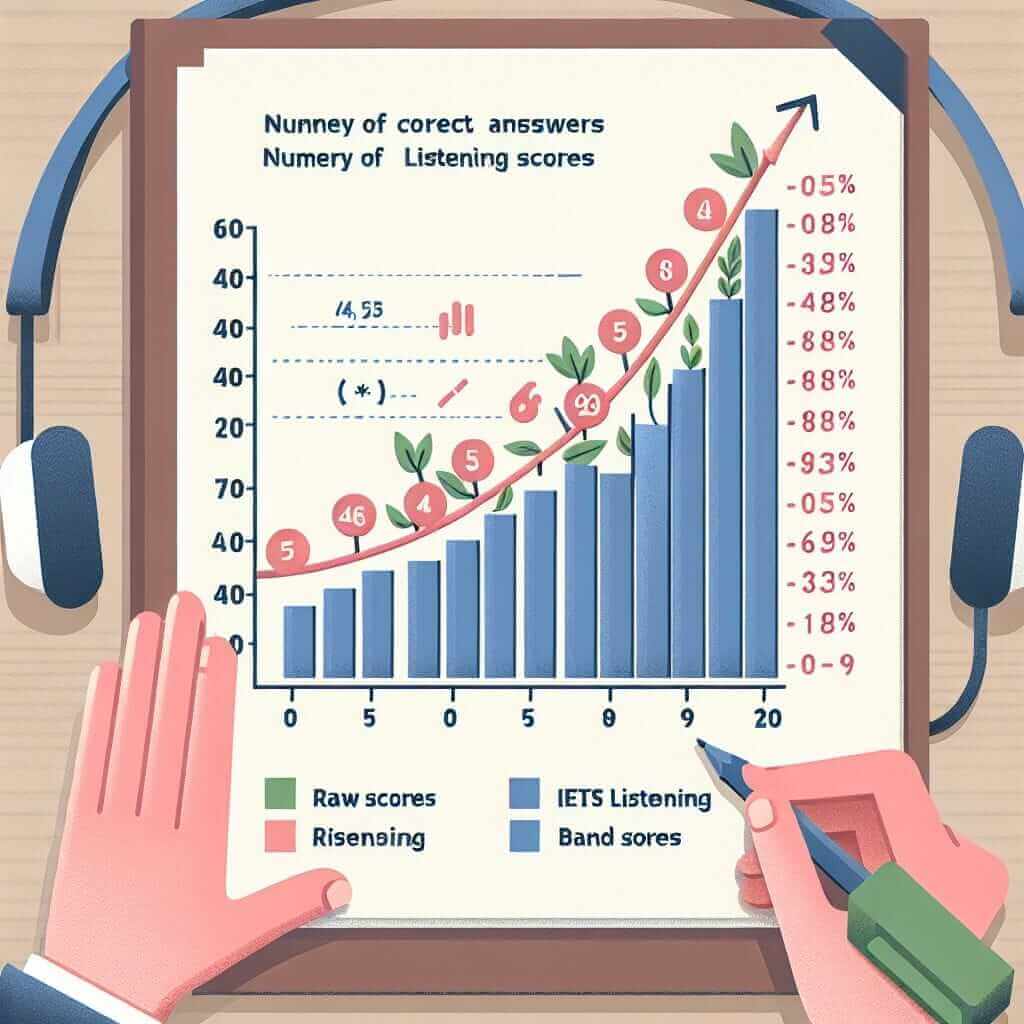As an IELTS instructor with over two decades of experience, I’ve encountered countless students fixated on predicting their scores. While no magic formula exists, understanding how the IELTS Listening score is calculated can alleviate anxiety and provide clarity on your performance. This article delves into the intricacies of the IELTS Listening score calculation, offering insights to help you interpret your results effectively.
Deciphering the IELTS Listening Score: A Breakdown
The IELTS Listening test comprises 40 questions, each carrying one mark. Your raw score, the number of correct answers, is then converted to a band score ranging from 0 to 9. The conversion is based on a complex algorithm that varies slightly between test dates and versions (Academic/General Training).
Understanding the Band Score Conversion
Instead of a linear scale, the IELTS Listening band score conversion utilizes a curved system. This means that the difference in raw scores required to increase your band score is not uniform across the band scale. For instance, achieving a Band 6 might require 23 correct answers, while a Band 7 might necessitate 29 correct answers.

Factors Influencing Band Score Conversion
Several factors can influence the conversion of your raw score to a band score:
- Test Version: The Academic and General Training versions have separate conversion charts, reflecting the difference in difficulty levels.
- Test Date: To ensure fairness and account for slight variations in test difficulty, IELTS employs different conversion charts for different test dates.
Strategies for Maximizing Your Listening Score
While knowing the calculation is helpful, focusing on effective preparation is key. Here are some strategies to enhance your listening skills:
1. Familiarize Yourself with Accents and Vocabulary
The IELTS Listening test encompasses a range of accents and vocabulary. Regularly listening to English audio from diverse sources like podcasts, news channels, and documentaries can significantly improve your comprehension skills.
2. Practice Active Listening Techniques
During practice tests, focus on understanding the meaning and context of the audio rather than simply hearing the words. Utilize active listening techniques like note-taking, summarizing, and predicting answers.
3. Analyze Your Mistakes
After completing practice tests, carefully analyze your mistakes. Identify recurring patterns in your errors, such as difficulty understanding specific accents or question types. This allows you to focus your preparation effectively.
4. Utilize Official IELTS Resources
Practice tests from official IELTS sources, such as the Cambridge IELTS series, provide the most accurate reflection of the actual test format and difficulty level. Utilize these resources to gauge your progress and identify areas needing improvement.
Conclusion
While the precise formula for IELTS Listening score calculation remains shrouded in mystery, understanding the underlying principles can provide valuable insights. Focus on consistent practice, targeted skill development, and strategic test-taking techniques to maximize your score. Remember, your IELTS journey is about more than just a number; it’s about building your English language proficiency for future success.